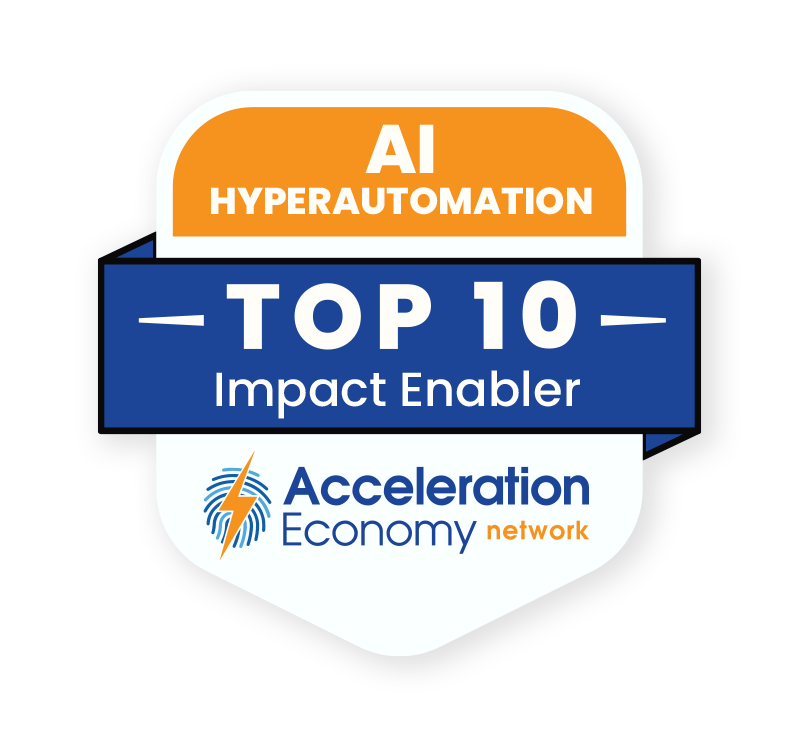As artificial intelligence (AI) and automation become more widespread, the future of software development looks increasingly codeless. In fact, the market for low-code development technologies is expected to increase to almost $30 billion by 2025.
Low-code/no-code platforms and related tools have the ability to not only supercharge professional developer processes but also enable other subject matter experts to quickly string together new apps and event-driven workflows. Since these platforms are visually-based, they are usable by people with a wider range of skill levels.
Although some pundits have reservations about low-code’s ability to empower professional developers, many are bullish on the technology and the prospect of bringing more software generation to the developer lifecycle. One such person is Pete Peterson, CTO of Riviera Partners, who has worked with low-code both in the private and public sectors for 10-plus years. Based on his positive experiences, he predicts that low-code/no-code is the natural evolution of software.
Below, we’ll consider the prospects of low-code/no-code and its staying power in the future of software development. I’ve included thoughts from experts in the field to understand if and why engineers will gravitate toward low-code-/no-code in the coming years. We’ll examine low-code/no-code use cases and consider where the ceiling is when implementing such technology.
Why the Evolution Toward Low-Code?
So, why are we heading toward more low-code? For one, low-code can grant more agility, enabling users to crank out applications faster. “This is the typical evolution of technology — you get macros, then you start to encapsulate things that have been proven,” said Peterson. “In my mind, low-code is a natural evolution of software programming.”
Greater abstraction in programming has been trending for decades. For example, fourth-generation programming languages help engineers avoid reinventing the wheel for common functions. Low-code offers similar abstractions for the entire application, including third-party integrations, drop-down menus, input boxes, and other user interface (UI) components. These reusable templates make it easy to apply business logic over a database and display it, says Peterson.
Low-code platforms help avoid constructing the same thing over and over. Therefore, a key benefit of adopting low-code is increased agility. It shortens the engineering laundry list and makes sprints far less time-consuming. “You can go in and add new functionality overnight and ship it pretty quickly,” said Peterson. “Everything’s about speed and time to market.”
Low-Code Use Cases
As evidence of its utility, consider how low-code/no-code has already been applied in practice. For example, Peterson has adopted low-code/no-code within various organizations over the years. As CIO of the City of Oakland, he saved taxpayers millions of dollars by implementing low-code solutions. His team built eight apps in 12 months, which helped rapidly modernize city services and increase digital inclusion. He also leveraged low-code to power an order management system in the past. At Riviera Partners, an executive recruitment platform, Peterson is applying low-code/no-code to streamline operations in the company’s marketing tools.
We’ve witnessed many similar cases of low-code/no-code being used to spark digital transformation in the public sector. Many government agencies utilized low-code/no-code to reduce paper-based processes and help maintain safe social services throughout the pandemic. We’ve also tracked the use of low-code/no-code within industries such as manufacturing, retail, healthcare, construction, and plenty of other areas.
Low-Code’s Ceiling
Low-code tools are excellent for wrapping databases and quickly automating the creation of business applications — but low-code certainly has its limits. For example, it’s probably not a fit for technology startups building services that require high concurrency, explains Peterson. As such, the future of software engineering will likely involve a mixture of both traditional coding and low-code/no-code platforms. As Josh Miramant, CEO of Blue Orange Digital, which specializes in helping businesses implement data-driven analytic strategies, explains:
“Low-code/no-code platforms will make it easier for non-technical users to build easier software prototypes and more straightforward functionalities. It also allows organizations to develop software faster and with fewer resources, but skilled developers will still need to create more complex applications.”
Low-code platforms also tend to sacrifice deep customization in favor of usability, and introducing too much software development automation can cause friction. “The significant limits of low-code/no-code are around customization, new functionalities, or specialization,” adds Miramant. “The more an input interface is simplified, the more the underlying capabilities are reduced.”
Final Thoughts
There is an argument to be made that code generation algorithms like ChatGPT will remove a lot of the manual work from programming and replace the need for complete low-code/no-code platforms altogether. We might be dragging and dropping right now, but the future may look more like Star Trek, suggests Peterson, where software development occurs in conjunction with a natural language assistant.
However, consolidated coding platforms still offer some benefits, such as centralizing applications for collaboration and creating reusable templates. Furthermore, initiating and maintaining integrations across SaaS services requires ongoing lifecycle management. and outsourcing upkeep to a development platform could prove beneficial. Also, since low-code requires minimal effort, it can be helpful to small teams lacking skillsets or large engineering teams.
“As these tools and platforms continue to improve and evolve, they will continue to grow in market share and drive mainstream adoption,” said Miramant. “This adoption will not just replace some existing software development efforts but also expand the market to allow non-technical users to broaden how they leverage applications that were inaccessible in the past.”
Regardless, in determining future technological decisions, organizations should be forward-thinking while emphasizing tangible business outcomes. “Let’s focus on what moves the needle, and what moves the needle is business logic,” said Peterson.
Which companies are the most important vendors in AI and Hyperautomation? Click here to see the Acceleration Economy Top 10 AI/Hyperautomation Short List, as selected by our expert team of practitioner-analysts








